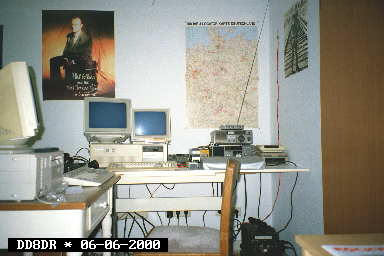

This is the front view of my radio station. The computers are a bit "aged", but they are still useful for data transmission via radio (packet radio). Packet-Radio is a radio network with which radio amateurs exchange data worldwide. In addition to various radios, two shortwave receivers can be seen on the right half of the screen. For example, you can receive weather data from all over the world.
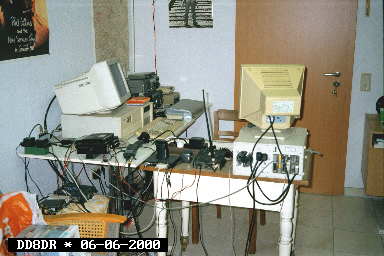
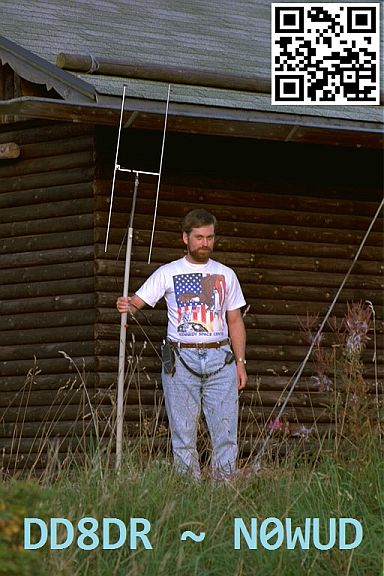
My QSL-Card (2000)
Radio amateurs send themselves cards to confirm their radio communications. On the back of these QSL cards, all radio connection data such as call sign, name and location of the amateur radio station and date of the radio connection are recorded. The front is usually decorated with a picture and the callsign. In radio contests, the QSL cards are evaluated and points are awarded depending on the distance covered.

In the computer age it is also possible to send QSL cards over the Internet. The recipient can then print them out on his computer. The system checks whether the sender's data is correct.
If this is the case, a certificate will be issued:
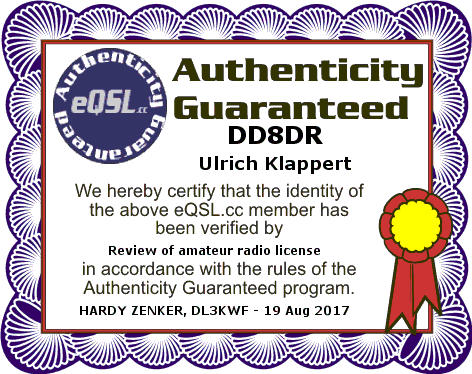 A selection of my eQSL card collection
A selection of my eQSL card collection
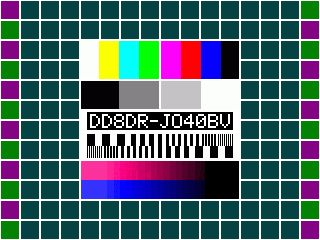
My self-designed SSTV testcard
A ZIP archive with MMSSTV audio files can be downloaded
here.

Handheld radio (digital & analogue) with individually designed boot
screen

In addition to analogue radio communication, digital radio communication is also used by radio amateurs today. The radios of the latest generation usually also have the possibility to transmit GPS position data. With the appropriate configuration, this data is transmitted in real time and displayed on the APRS homepage.
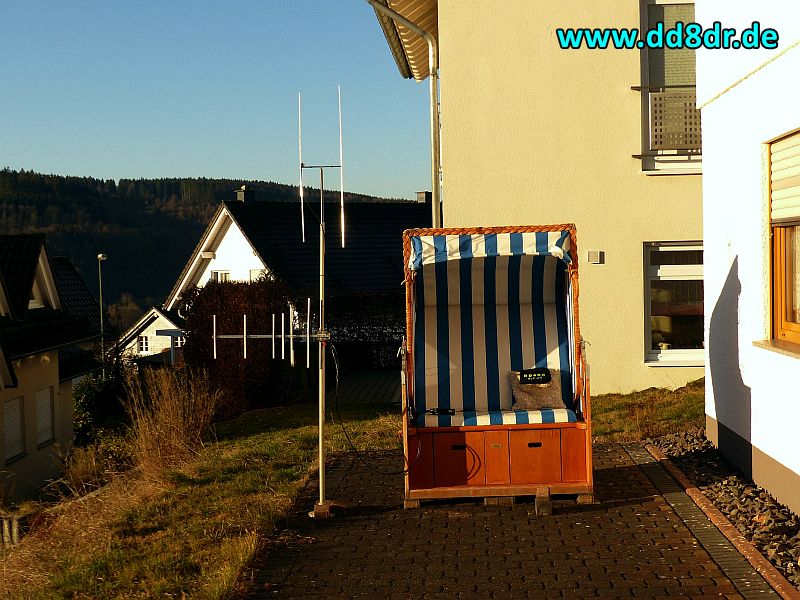
QRV on 2m / 70cm out of the beach chair
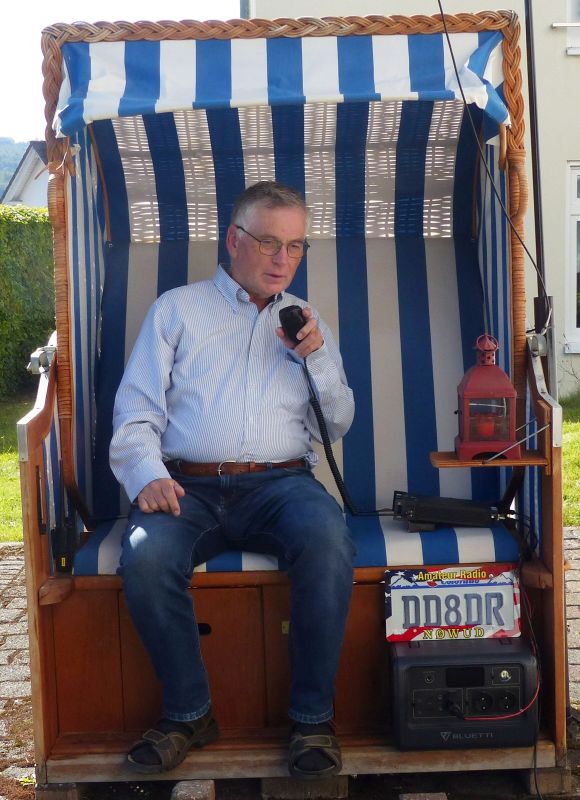
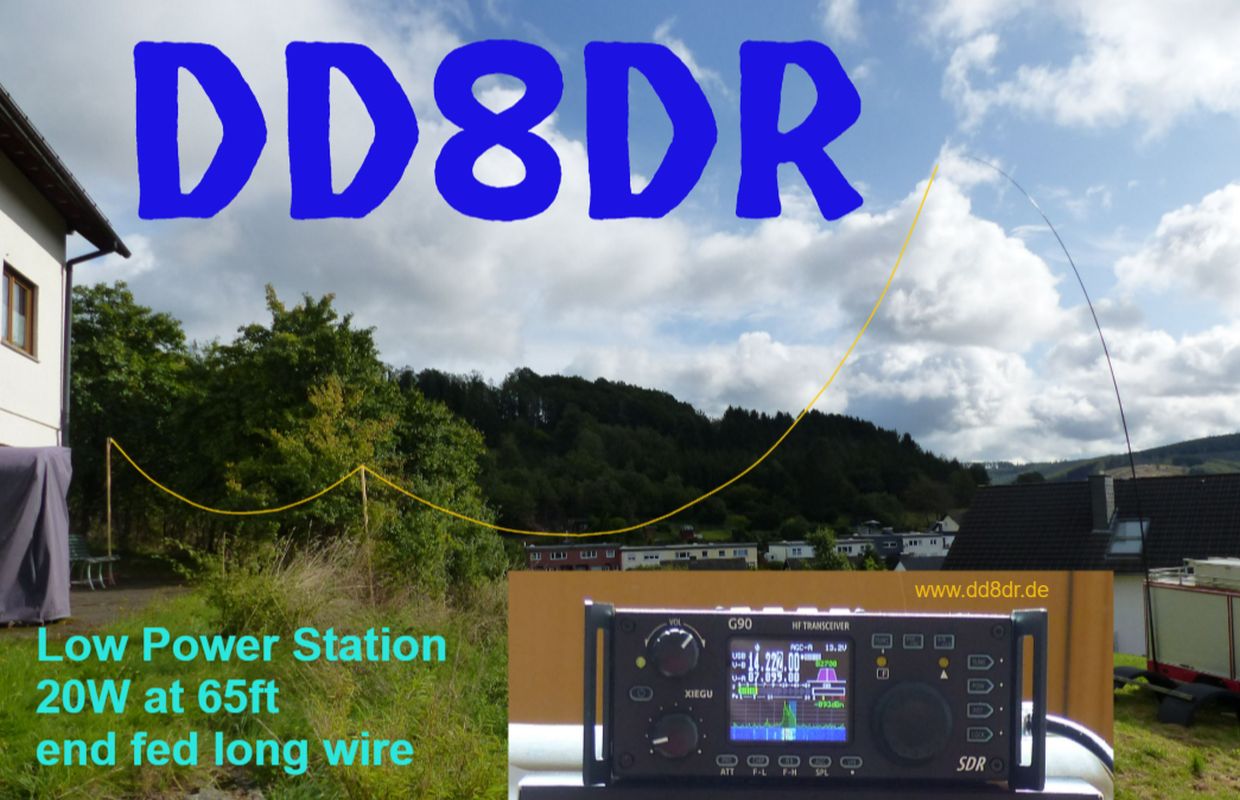
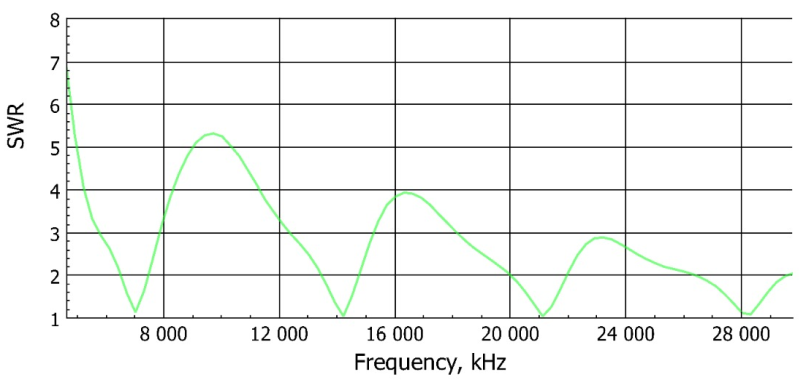
In my free time I like to be outdoors and often take the opportunity to activate a POTA location.

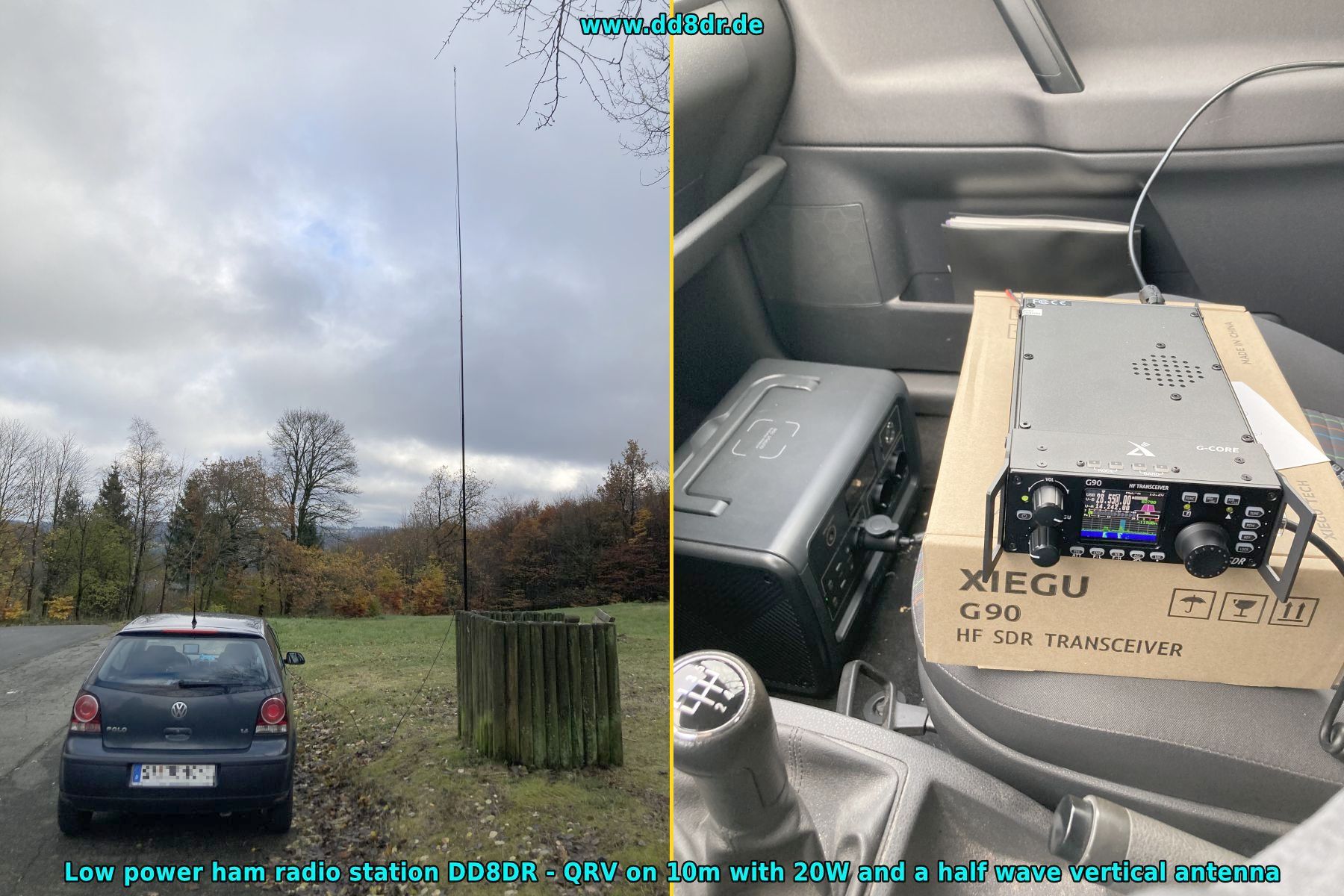
Ham radio activity from the 'Ginsberger Heide' park (POTA DE-0533)
with 10W output power and a vertical half-wave antenna
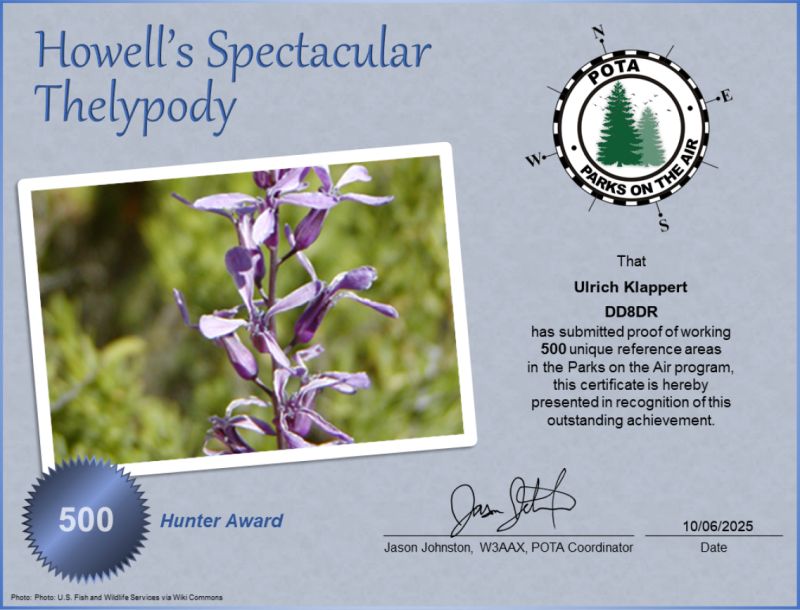


Information on the POTA program and the rules for activation can be found on the POTA homepage.
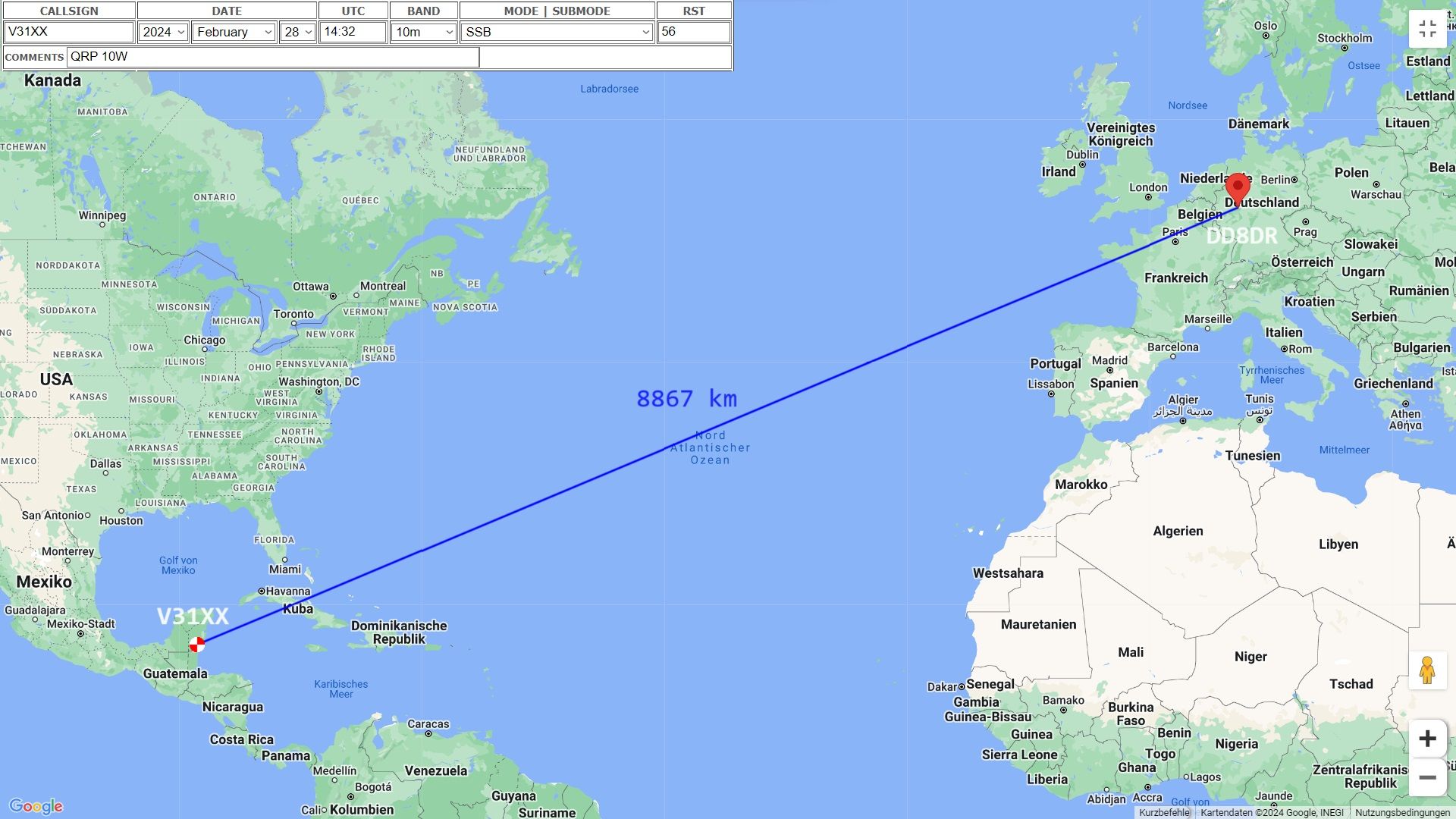
DX contact with low power on the 10m band in SSB over a distance of 8867km


The station consisted of my SDR transceiver XIEGU G90, a vertical antenna for 10m and an iPhone with the iFTx app. No adapters or cables were used. Just the original microphones and loudspeakers. I operated the PTT by hand. I think the results are impressive. This was an experiment. In the long run, the operation would be too tedious for me, and I had to rely on a low-noise environment.



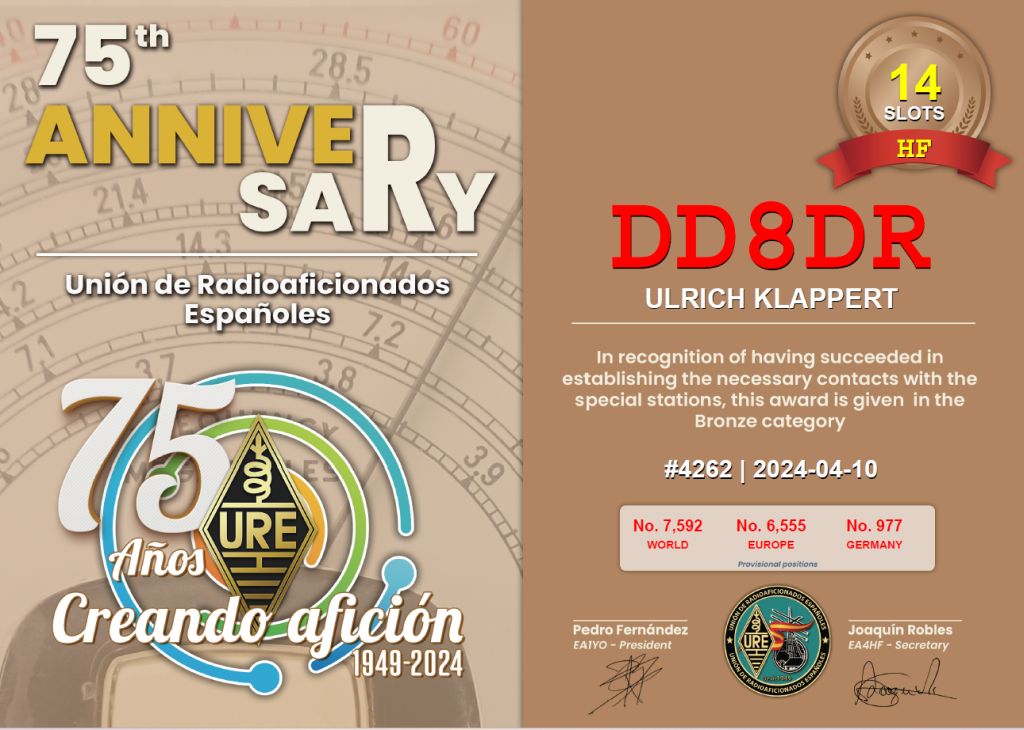


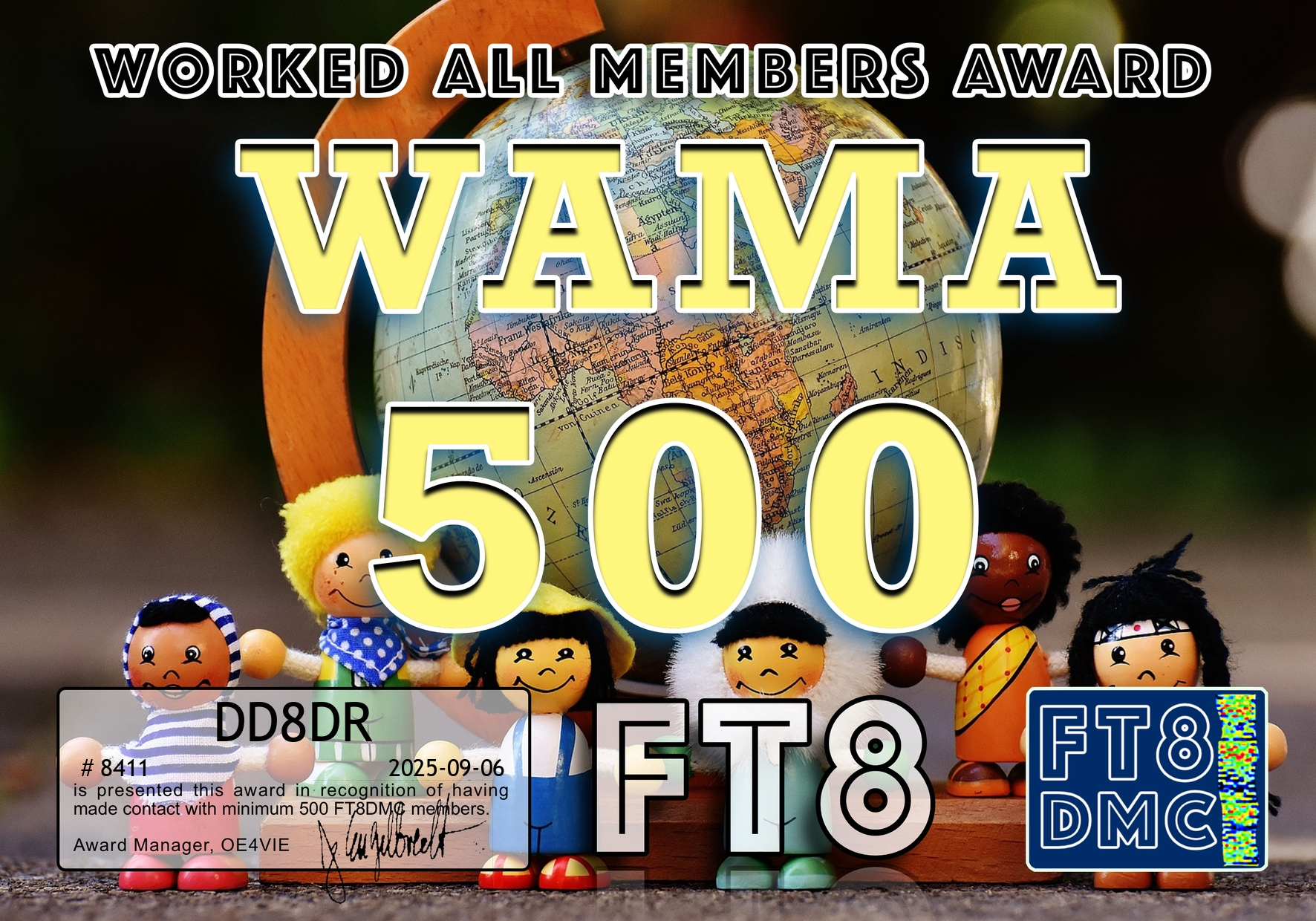





Copyright © 1997, Ulrich Klappert, Last Updated: 2025-10-08